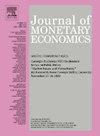Heterogeneous job ladders
IF 4.3
2区 经济学
Q1 BUSINESS, FINANCE
引用次数: 0
Abstract
We investigate different wage growth rates over the life cycle for poor and rich workers, and how they relate to the frequency and quality of job-to-job transitions. Using the universe of labor market histories for Austrian workers born in 1960–62 to, we show that workers who are at the bottom of the earnings distribution have higher employer-to-employer transition rates than richer workers throughout their life. Nevertheless, they work for worse- and worse-paying firms as they age and are more likely to undergo unemployment spells at all ages. We propose a structural framework with learning by doing and heterogeneity along five dimensions: initial level of human capital, learning ability, and job separation propensity on the worker side, and productivity level and quality of offered learning opportunities on the employer side. Our model replicates the wage gap and the difference in the frequency of labor market transitions we document in the data, and allows us to investigate several dimensions of heterogeneity in the quality of labor market transitions. We find that poor workers’ lackluster wage growth stems from a combination of deteriorating human capital, employment in low-productivity jobs, and scarce on-the-job learning opportunities. We then evaluate a policy which matches low-wage workers to high-learning employers. We find that ameliorating the learning opportunities early in a worker’s career has a non-negligible impact on lifetime earnings. The gains from matching with a better employer greatly increase with job stability, as lower separation rates limit human capital depreciation and improve the odds of matching with high-productivity employers in the future.
异构工作阶梯
我们研究了穷人和富人工人生命周期中不同的工资增长率,以及它们与工作到工作转换的频率和质量之间的关系。利用1960 - 1962年出生的奥地利工人的劳动力市场历史,我们表明,处于收入分配底部的工人在其一生中比较富有的工人有更高的雇主到雇主的转换率。然而,随着年龄的增长,他们在薪酬越来越低的公司工作,而且更有可能在各个年龄段都经历失业期。我们提出了一个“边做边学”和异质性的结构框架,包括五个维度:劳动者的初始人力资本水平、学习能力和工作分离倾向,雇主的生产率水平和提供的学习机会质量。我们的模型复制了工资差距和我们在数据中记录的劳动力市场转型频率的差异,并允许我们调查劳动力市场转型质量异质性的几个维度。我们发现,贫困工人工资增长乏力的原因是人力资本不断恶化、从事低生产率工作以及在职学习机会稀缺。然后,我们评估了一项将低工资工人与高水平雇主相匹配的政策。我们发现,在工人的职业生涯早期改善学习机会对终身收入有不可忽视的影响。与更好的雇主匹配的收益随着工作的稳定性而大大增加,因为较低的离职率限制了人力资本折旧,并提高了未来与高生产率雇主匹配的几率。
本文章由计算机程序翻译,如有差异,请以英文原文为准。
求助全文
约1分钟内获得全文
求助全文
来源期刊

Journal of Monetary Economics
Multiple-
CiteScore
7.20
自引率
4.90%
发文量
90
审稿时长
74 days
期刊介绍:
The profession has witnessed over the past twenty years a remarkable expansion of research activities bearing on problems in the broader field of monetary economics. The strong interest in monetary analysis has been increasingly matched in recent years by the growing attention to the working and structure of financial institutions. The role of various institutional arrangements, the consequences of specific changes in banking structure and the welfare aspects of structural policies have attracted an increasing interest in the profession. There has also been a growing attention to the operation of credit markets and to various aspects in the behavior of rates of return on assets. The Journal of Monetary Economics provides a specialized forum for the publication of this research.
 求助内容:
求助内容: 应助结果提醒方式:
应助结果提醒方式:


